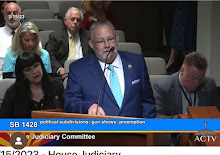In an ever-evolving corporate landscape, fostering a hope-fueled workplace has become a pivotal leadership task. Dr. Shane Lopez, renowned for his insights in "Making Hope Happen," emphasizes three core strategies that leaders must employ to inspire and sustain hope among their teams. These strategies are not merely suggestions but non-negotiable pillars for any leader aiming to create a vibrant and forward-thinking work environment.
1. Create and Sustain Excitement About the Future
A compelling vision of the future is fundamental for inspiring and mobilizing a team. Leaders who articulate a clear and exciting vision help employees see beyond their daily tasks to the larger purpose and potential of their work. This future-oriented mindset is essential for cultivating hope.
Define and Share Your Purpose
The first step is to define your organization's purpose clearly. Once you have a well-defined purpose, it’s imperative to share it widely and vividly. Paint a picture of the future that is so detailed and compelling that every team member can envision it. This involves communicating not just the destination but the journey as well.
For instance, if a company’s goal is to become a leader in sustainable technology, the leader should frequently communicate how each project and task contributes to this overarching goal. Storytelling can be a powerful tool here, allowing leaders to make the future tangible and exciting.
Involve the Team in the Vision
Involving team members in the creation and refinement of this vision can further enhance their engagement and commitment. When people feel that they have a stake in the future, their motivation and hope naturally increase. Regular updates on progress and celebrating milestones can help sustain this excitement over time.
2. Remove Existing Obstacles to Goals and Avoid Creating New Ones
Leaders must be adept at identifying and dismantling obstacles that impede progress toward organizational goals. This is particularly crucial in environments where teams have experienced frequent changes or disruptions.
Identify and Empower Change Agents
When I joined Universal Studios during a massive reorganization, each business unit had new management, and there was a pervasive sense of change fatigue. The challenge was to demonstrate that our approach to change was different and effective. One key strategy was identifying both formal and informal change agents within the organization. These individuals, when equipped with the right information and support, can help smooth the transition and foster acceptance of new goals.
Communicate Clearly and Transparently
Clear and transparent communication is another critical element. Teams need to understand the rationale behind changes and how these changes will benefit them and the organization. This involves being honest about challenges and realistic about timelines, thereby building trust and reducing resistance.
Trust Your Team
Micromanagement can stifle creativity and motivation. Leaders must show confidence in their team’s abilities by providing guidance and then stepping back to let them execute. Trusting your team not only empowers them but also fosters a culture of accountability and ownership.
3. Re-establish Goals Whenever Circumstances Necessitate
Flexibility and adaptability are essential traits for leaders, especially in dynamic environments. Re-establishing goals when circumstances change ensures that the team remains aligned and motivated.
Warm Up Your Communication
To effectively re-establish goals, it’s important for leaders to maintain warm and personal communication channels. Leaders who are seen as approachable and empathetic are more likely to gain buy-in for new or updated goals. Personal interactions, whether through emails, meetings, or informal conversations, help build rapport and trust.
Engage with the Frontline
Engaging with frontline employees provides leaders with valuable insights into the practical challenges and opportunities within the organization. This engagement not only informs better goal-setting but also demonstrates a leader’s commitment to understanding and supporting their team.
Be a Visible and Positive Presence
Being a visible and positive presence can make a significant difference. Leaders should strive to be more than just a distant authority figure. Regularly visiting different departments, attending team meetings, and showing genuine interest in the work and well-being of employees can foster a sense of community and shared purpose.
Creating a hope-fueled workplace requires deliberate and sustained effort from leaders. By creating and sustaining excitement about the future, removing obstacles to progress, and re-establishing goals as needed, leaders can inspire their teams to embrace change and strive toward a shared vision. Understanding and addressing the reasons behind resistance to change, while fostering an environment of trust and open communication, are crucial steps in becoming the leader your team needs.
In
summary, a hope-fueled workplace is not just a lofty ideal but a practical and
achievable goal. Leaders who commit to these three non-negotiable strategies
can drive meaningful change and create a dynamic, engaged, and hopeful work
environment.

